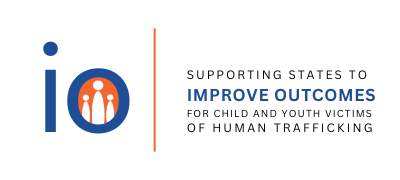Statewide Anti-Trafficking Strategic Planning Guide
The Strategic Planning Guide is tailored for OVC-funded Improving Outcomes grantees, anti-human trafficking agencies, and organizations, task forces, and multi-disciplinary teams. This resource provides an overview of the following strategic planning steps to support the strategic planning process.
Steering Committee Brief
Summarizes and documents the development of the steering committee, which is a multidisciplinary oversight body comprising service provider partners who serve non-systems-involved, transition-age youth. Includes descriptions of the role of the steering committee, recruitment of steering committee members,
Tribal Listening Session Report
The Nebraska Indian Child Welfare Coalition (NICWC), a subrecipient on NE’s grant, conducted an assessment of the current state of human trafficking in tribal communities via listening sessions with each of the four tribes in Nebraska: The Omaha
HT and Exploitation Informational Guides
These guides were created for four different audiences: the general public, caregivers, law enforcement, and the media. The general guide includes information on the definition of human trafficking, traffickers and buyers, victims, how one should talk about human
Facilitation and Adult Learning Techniques
Created to support human trafficking coordinators in their efforts to host MDT meetings and train professionals. Includes a list of tips on “facilitation 101,” hosting effective discussions, adult learning techniques, and virtual meetings, as well as related weblinks.
LA Child and Youth Trafficking Collaborative MDT Taxonomy
Defines different kinds of MDTs: advisory MDTs, case review, and emergency response.
Essential Elements of MDT Development
Lists core elements that should be incorporated into the structure of an MDT for child and youth trafficking victims, as well as the steps to develop an MDT. Provides guidance on establishing mission, vision, and values statements; defining
Task Force Resource
Includes weblinks to different resources that may be useful to a human trafficking task force. The resources are organized into the following categories: trafficking task force development and maintenance; victims assistance training and resources; anti-human trafficking training; trauma-informed
Stages of a Task Force
Guides human trafficking task forces to prioritize efforts. Describes three task force stages: foundation, stabilization, and sustainability. Each stage includes key activities and critical topics to address. The document is designed to address task forces at different stages
